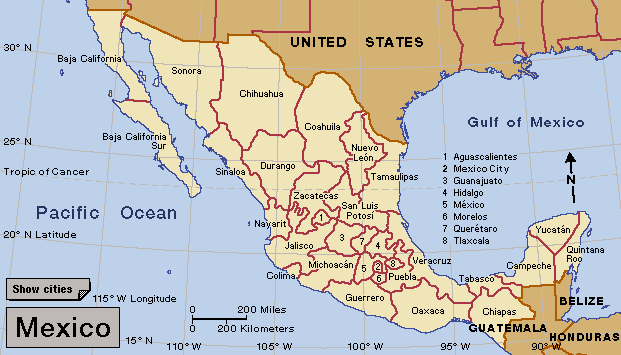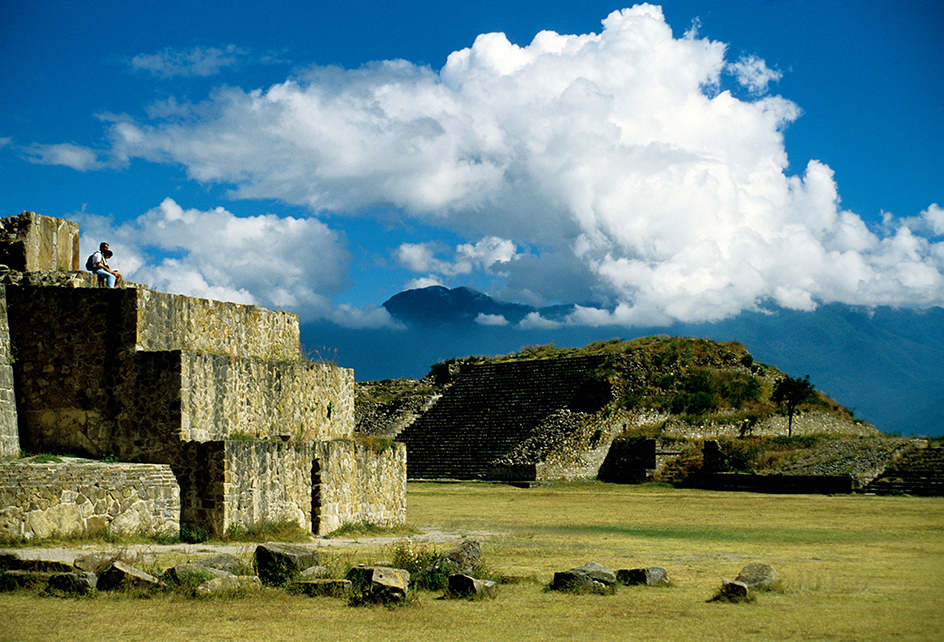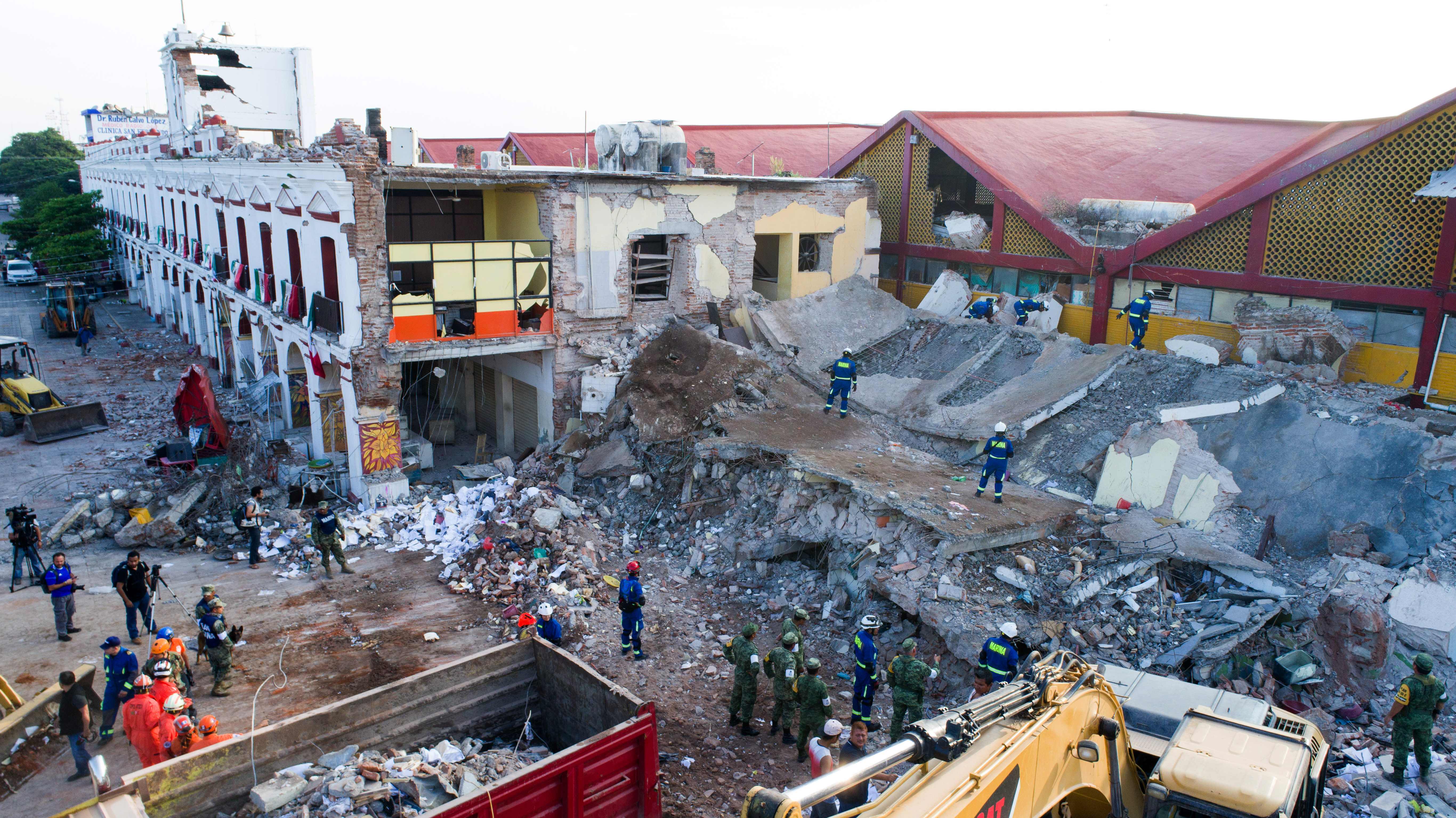Oaxaca << wah HAH kuh >> is a rural state in southern Mexico. The Pacific Ocean and the states of Chiapas, Guerrero, Puebla, and Veracruz form Oaxaca’s borders. Oaxaca covers 36,275 square miles (93,952 square kilometers). At the time of the 2020 census, it had a population of 4,132,148. The capital, Oaxaca de Juarez, lies in the central valleys, one of several ecological zones in the state. Other zones include the northern and western highlands and the tropical Isthmus of Tehuantepec.

Oaxaca is home to a number of Indigenous (native) peoples, including the Chatino, Huave, Mixe, Mixtec, and Zapotec. Many important archaeological sites dot the landscape. These include Monte Albán, the remains of a city founded by the Zapotec people in the 500’s B.C.
Indigenous people domesticated corn in the Oaxaca region thousands of years ago. The Spanish explorer Hernán Cortés conquered the area in the early A.D. 1500’s. Oaxaca remained under Spanish control until 1821, when Mexico gained independence. Oaxaca became one of the original Mexican states in 1824. Benito Juárez, a Zapotec man from Oaxaca, served as Mexico’s president from 1861 to 1872.

Small-scale agriculture is Oaxaca’s chief economic activity. The state also has a growing tourist industry. Visitors are attracted by Oaxaca’s archaeological treasures and by the rich culture of its Indigenous peoples. The state is known for its handicrafts and fine arts. Notable modern Oaxacan artists include the painters Rufino Tamayo and Francisco Toledo. Nevertheless, poverty, a low rate of literacy, slow economic growth, and high emigration continue to be problems for the state.

In 2006, a teachers’ strike that began in Oaxaca in May grew over the next few months into a violent protest against Governor Ulises Ruiz. The demonstrators, who included radical leftists, accused the governor of brutality, corruption, and fraud, and demanded his resignation. In October, federal troops arrived in Oaxaca’s capital to control the situation. By early 2007, the protests largely had ended, but Oaxaca’s tourist industry had suffered a setback.
